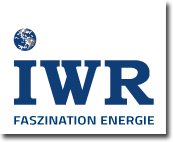E-World 2013: renewable energy industry in North Rhine-Westphalia – Prospects and opportunities
During the 17th Expert Congress on Future Energies, IWR director Dr. Norbert Allnoch provided his 1,000-strong audience with a fact check regarding the energy turnaround and the Renewable Energies Act (EEG). Allnoch criticised the fact that although the exchange electricity prices had fallen to their lowest level since 2005, only the industry, suppliers without their own power plants and major customers were profiting from this, while the falling exchange power prices are being financed by consumers via a higher EEG levy.Moreover, Allnoch pointed out that the current energy turnaround debate – obviously because of the upcoming German general election campaign – is focusing exclusively on the expansion of renewables and the discussion of costs. On the basis of the SLAM model (Standard Location Asset Model), presented to the public for the first time, a holistic model and evaluation procedure was set out, with which core competences (assets) of a site such as North Rhine-Westphalia can be analysed for different sectors. With an optimal SLAM mix, it is possible to optimise the strengths on the basis of the four asset areas (energy, industry, research and education).
In conclusion, Dr. Allnoch drew attention to the further prospects for renewable energy, referred to the most important drivers ((the finite nature of fossil fuels and dependence on them, ageing power plants with increasing risks, climate protection activities) and presented the CERINA-Plan initiative as an alternative to the Kyoto Protocol. The underlying idea: linking CO2 emissions of countries to investments in climate-friendly and renewable energy technologies.
(Download Allnoch lecture slides at E-World 2013)
Released on: 2013-02-05



